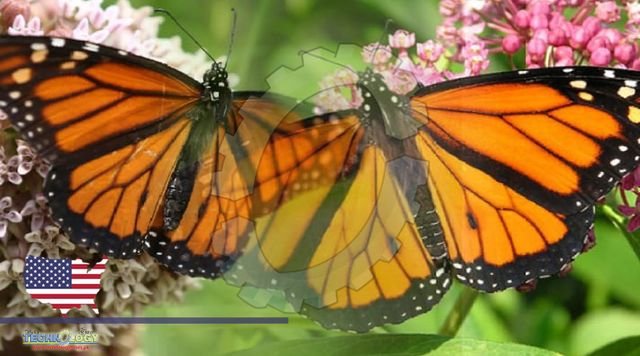The migratory monarch butterflies, a North American icon with a continent-spanning annual journey, now faces the threat of extinction, according to a top wildlife monitoring group.

Thursday’s decision by the International Union for Conservation of Nature to declare the species endangered comes as years of habitat destruction and rising temperatures have decimated the fluttering orange itinerants’ population. The species’ numbers have dropped between 22 and 72 percent over the past decade, according to the new assessment. Monarchs in the Western United States are in particular danger: The population declined by an estimated 99.9 percent, from as many as 10 million butterflies in the 1980s to fewer than 2,000 in 2021. “It is difficult to watch monarch butterflies and their extraordinary migration teeter on the edge of collapse, but there are signs of hope,” said Anna Walker, an entomologist at the New Mexico BioPark Society who led the butterfly assessment.
The loss of monarchs underscores a looming extinction crisis worldwide, with profound implications for the humans who have caused it. One million species could disappear, according to the United Nations, a potential calamity not just for plants and animals but also for the people who depend on ecosystems for food and fresh water. The IUCN is a network of governmental and nonprofit organizations that comprehensively tracks the status of species. Scientists from around the world work together to produce assessments. Among butterflies, the monarch is not alone. Butterflies across the West are vanishing as the region gets hotter and drier. According to one recent study, a majority of 450 species across a swath of 11 Western states are dropping in numbers.
But it is the decline of the well-known monarch that has grabbed headlines and caused dismay among many wildlife watchers. The butterfly is famous for its epic migrations from wintering grounds in Mexico and California across the rest of the continent, signaling a change in season as it fans out into the northern reaches of the United States and Canada. Forest-clearing to harvest timber and to make space for farms and homes is creeping into its wintering grounds. Pesticides and herbicides threaten not only the insect itself but also milkweed, which monarch larvae need to live. Yet it is possible that the monarch which, like many insects, plays a pivotal role in pollinating both crops and wildflowers could come back from the brink. Monarch aficionados are replanting milkweed across its migration path. The population of insects can fluctuate wildly, and if conditions are right, the monarchs’ numbers can rebound. Last year, in fact, was a bumper year for the butterfly.
Source: This news is originally published by washingtonpost